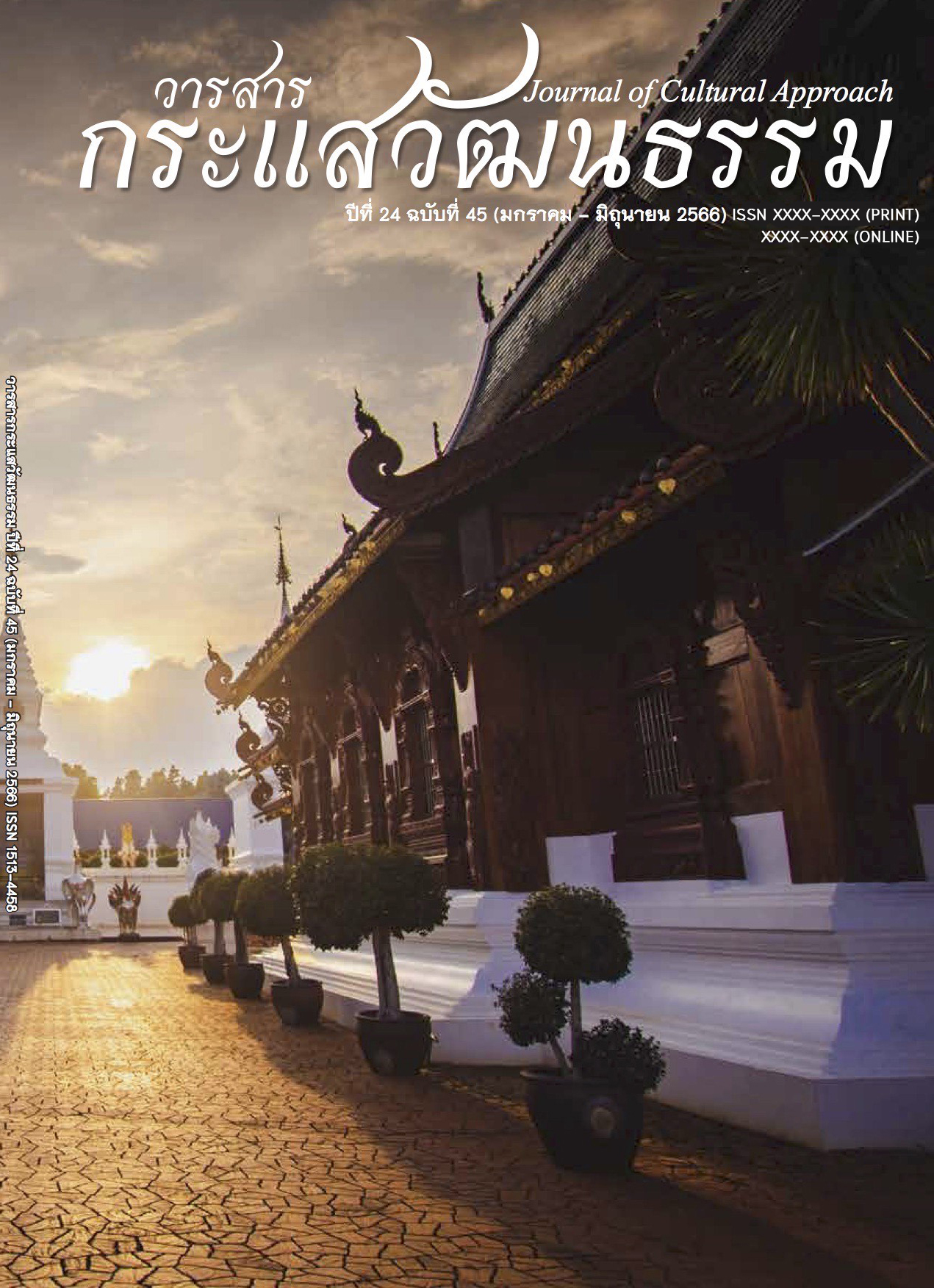การสร้างสรรค์นิทานพื้นบ้านล้านนาเพื่อนำเสนอใหม่ในยุคดิจิทัล
Main Article Content
บทคัดย่อ
การวิจัยเชิงคุณภาพนี้ เป็นการศึกษาเพื่อหาแนวทางการสร้างสรรค์นิทานพื้นบ้านล้านนาเพื่อนำเสนอในรูปแบบใหม่ที่เหมาะสมกับผู้ฟังในยุคดิจิทัล โดยใช้แนวคิดทฤษฎีคติชนสร้างสรรค์และทฤษฎีการสื่อสารเป็นกรอบในการทำงาน โดยศึกษานิทานพื้นบ้านล้านนาที่คัดเลือกมาแล้ว 95 เรื่อง
ผลการศึกษาพบว่า การนำเสนอนิทานพื้นบ้านล้านนาในรูปแบบของคลิปนิทานประกอบภาพวาดและดนตรีเป็นการสื่อสารวัฒนธรรมล้านนาไปสู่ผู้ชมในวงกว้างผ่านเทคโนโลยีการนำเสนอภาพและเสียงออนไลน์ โดยใช้ 4 กระบวนการในการสื่อสารวัฒนธรรม ได้แก่ 1) กลวิธีการเขียนบทอ่านนิทาน 2) วิธีการอ่านนิทานที่ใช้สำเนียงและน้ำเสียงที่หลากหลาย 3) การใช้ภาพวาดประกอบที่สื่อถึงวัฒนธรรมล้านนา และ 4) การใช้ดนตรีประกอบที่เป็นดนตรีล้านนาร่วมสมัย สถิติที่ได้จากการเผยแพร่ผลผลิตของโครงการบน YouTube สะท้อนให้เห็นว่า ผลผลิตของการวิจัยนั้นเป็นประโยชน์ต่อผู้ฟังทุกวัยที่มีวิถีชีวิตปัจจุบันผูกพันกับเทคโนโลยีดิจิทัล นิทานพื้นบ้านล้านนาที่ถูกลดบทบาทลงในยุคปัจจุบันจึงควรได้รับการสร้างสรรค์ใหม่เพื่อนำเสนอในรูปแบบที่เหมาะสมกับยุคดิจิทัล
Article Details

อนุญาตภายใต้เงื่อนไข Creative Commons Attribution-NonCommercial-NoDerivatives 4.0 International License.
Proposed Creative Commons Copyright Notices
1. Proposed Policy for Journals That Offer Open Access
Authors who publish with this journal agree to the following terms:
- Authors retain copyright and grant the journal right of first publication with the work simultaneously licensed under a Creative Commons Attribution License that allows others to share the work with an acknowledgement of the work's authorship and initial publication in this journal.
- Authors are able to enter into separate, additional contractual arrangements for the non-exclusive distribution of the journal's published version of the work (e.g., post it to an institutional repository or publish it in a book), with an acknowledgement of its initial publication in this journal.
- Authors are permitted and encouraged to post their work online (e.g., in institutional repositories or on their website) prior to and during the submission process, as it can lead to productive exchanges, as well as earlier and greater citation of published work (See The Effect of Open Access).
Proposed Policy for Journals That Offer Delayed Open Access
Authors who publish with this journal agree to the following terms:
- Authors retain copyright and grant the journal right of first publication, with the work [SPECIFY PERIOD OF TIME] after publication simultaneously licensed under a Creative Commons Attribution License that allows others to share the work with an acknowledgement of the work's authorship and initial publication in this journal.
- Authors are able to enter into separate, additional contractual arrangements for the non-exclusive distribution of the journal's published version of the work (e.g., post it to an institutional repository or publish it in a book), with an acknowledgement of its initial publication in this journal.
- Authors are permitted and encouraged to post their work online (e.g., in institutional repositories or on their website) prior to and during the submission process, as it can lead to productive exchanges, as well as earlier and greater citation of published work (See The Effect of Open Access).
เอกสารอ้างอิง
Athamasar, R. (1993). Folklore. Chiang Mai Rajabhat University.
Berlo, D. K. (1960). The Process of Communication: An Introductory to Theory and Practice. Holt, Rinehart and Winston.
Boonsaeng, T. (2017). Mythology and Local Folk Tales and Youth Socialization in Southern Thailand. DRIRDI Research for Community Service Journal, 3(2), 93–119.
Chaiyakul, H. (1996). The Use of Humour in Lanna Jests. Chiang Mai University.
Fhaichakhammoon, P.W. (2014). Elephants in Lanna Folktale. Chiang Mai University.
Klathinphu, T. (2018). A Study of Personality, Cross-Cultural Communication and Cultural Diversity of Employees Affecting Integrated Teamwork Effectiveness: A Case Study of Japanese Companies in Bangkok and Metropolitan Areas. Bangkok University.
Marketeer. (2020). Comparison Spotify-Joox-YouTube, Which One is to Thai’s Taste Most. https://marketeeronline.co/archives/158418
Na Thalang. S. (2016). Creative Folklore: Dynamics and Application of Folklore in Contemporary Thai Society. Princess Maha Chakri Sirindhorn Anthropology Centre.
Nimmanhaemin, P. (2000). Folktales Study. Chulalongkorn University Press.
Pakwan, T. (2010). Lanna Folklore. Silpakorn University.
Srirakaew, W. & Mahavarakorn, S. (2021). Way of Life Associated with Rice in Thai and Vietnamese Folk Tales. Institute of Culture and Arts Journal, Srinakharinwirot University, 23(1–45), 21–33.
Thitathan, S. (1989). Different Family Roles, Different Interpretations of Thai Folktales. Asian Folklore Studies, 48(1), 5–20.


